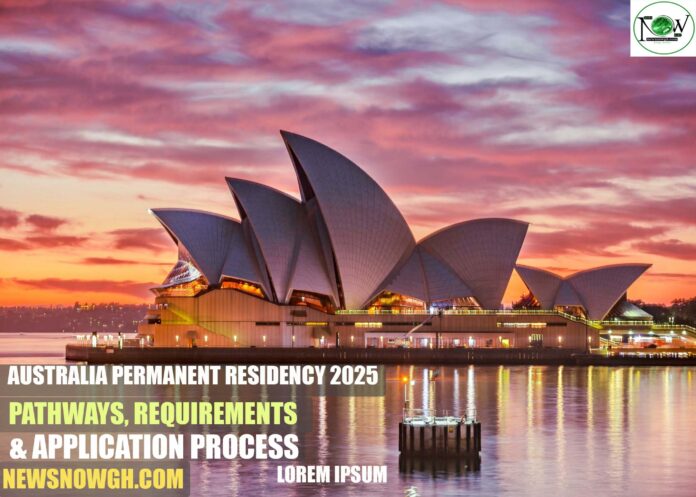Australia Permanent Residency 2025: Pathways, Requirements & Application Process
Australia continues to attract migrants seeking a high quality of life, excellent education, and diverse career opportunities. If you’re thinking about making Australia your permanent home, various visa pathways can lead to Permanent Residency (PR). Key options include skilled migration, family sponsorship, business investment, and employer nomination.
This guide outlines the PR process in 2025, detailing eligibility requirements, visa types, and essential steps for a successful application.
Overview: Permanent Residency in Australia
Permanent residency allows non-citizens to live, work, and study in Australia indefinitely. PR holders enjoy many rights similar to Australian citizens, including:
- Access to Medicare (Australia’s public healthcare system)
- Eligibility for domestic tuition rates at universities
- The ability to sponsor eligible family members for PR
- A pathway to Australian citizenship after meeting residency requirements
However, PR holders cannot vote in federal elections and must apply for a Resident Return Visa (RRV) if they travel outside Australia after five years.
Key Visa Pathways to Permanent Residency
1. Skilled Migration Program
The Skilled Migration Program targets individuals with qualifications and experience in occupations that are in demand in Australia.
Relevant visa subclasses:
- Subclass 189 – Skilled Independent Visa: A points-based visa for individuals not sponsored by an employer, state, or family member.
- Subclass 190 – Skilled Nominated Visa: A state-nominated, points-tested visa for individuals with in-demand skills in a particular state.
- Subclass 491 – Skilled Work Regional (Provisional) Visa: A temporary visa for skilled workers in regional Australia, leading to permanent residency after three years via Subclass 191.
General eligibility criteria:
- Aged between 18 and 44 years
- Proficient in English (typically IELTS 6.0 or equivalent)
- Occupation listed on the relevant Skilled Occupation List
- Positive skills assessment from a recognized authority
- Minimum of 65 points on the Points Test
- Submission of an Expression of Interest (EOI) via SkillSelect
2. Employer-Sponsored Visas
Employer-sponsored pathways allow individuals with valid job offers in Australia to apply for permanent residency.
Relevant visa subclasses:
- Subclass 482 – Temporary Skill Shortage (TSS) Visa: A temporary visa that can lead to PR through Subclass 186 or 494.
- Subclass 186 – Employer Nomination Scheme (ENS): Grants permanent residency to skilled workers sponsored by an approved employer.
- Subclass 494 – Skilled Employer Sponsored Regional (Provisional) Visa: Offers a path to PR after three years of regional employment.
General eligibility criteria:
- A valid job offer from an Australian employer
- Relevant work experience and qualifications
- Nomination in an eligible occupation
- Satisfy English language, health, and character requirements
3. Family Sponsorship Visas
Australian citizens and permanent residents can sponsor eligible family members for PR.
Relevant visa subclasses:
- Partner Visas (Subclasses 820/801 and 309/100): For spouses or de facto partners of Australian citizens or PR holders.
- Parent Visas (Subclasses 103/804 or 143/173): Allow parents of Australian citizens or PR holders to migrate. Subclass 143 offers faster processing but higher fees.
General eligibility criteria:
- The sponsor must be an Australian citizen or PR holder
- Evidence of a genuine relationship (for partner visas)
- Proof of financial dependency (if applicable)
- The sponsor must meet eligibility and financial criteria
4. Business and Investment Visas
Business owners, investors, and entrepreneurs may qualify for permanent residency by contributing to Australia’s economy.
Relevant visa subclasses:
- Subclass 188 – Business Innovation and Investment Visa: A temporary visa that leads to permanent residency through Subclass 888.
- Subclass 132 – Business Talent Visa: A direct PR visa for high-caliber business owners or entrepreneurs nominated by a state (limited availability as of 2025).
General eligibility criteria:
- Proven business or investment background
- Nomination by a state or territory government
- Evidence of sufficient net assets and investment capital
- Business activity in Australia
Common Requirements for All PR Applicants
Regardless of your pathway, all PR applicants must meet several key requirements:
- Health and Character Checks: Medical exams and police certificates are mandatory.
- English Language Proficiency: Requirements vary by visa subclass; accepted tests include IELTS, PTE, or TOEFL.
- Skills Assessment: Required for skilled migration applicants from an approved authority.
- Points Test: Applicable to certain visas, with a minimum score of 65 based on age, qualifications, English level, and experience.
Final Thoughts
In 2025, the process for obtaining Australian permanent residency remains structured and clear for skilled professionals, business owners, and family members. By understanding the visa options and preparing thoroughly, you can improve your chances of a successful PR application.
For the latest information, refer to the official website of the Department of Home Affairs: Department of Home Affairs.
Follow NewsNowGh to stay updated on the latest information regarding work permits, visas, and visa-sponsored employment.


